Super libro IX Almansoris, and other medical texts
A medical hodgepodge
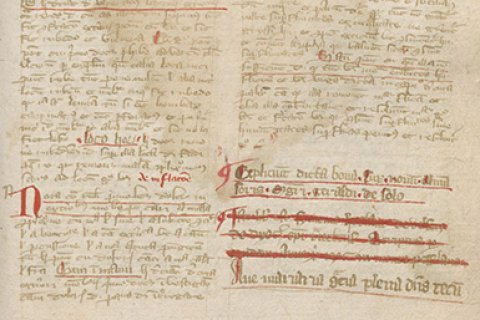
Some medieval books contain one or more specific texts that belong together since their inception. There are also medieval books where separate manuscripts ended up together, without having a connection as to their origins. A later owner of the texts put them together in one book. These books are called ‘convolutes’. An example of such a convolute is Ms. 688 from Utrecht University Library. It contains several medical and astrological texts that are written down over a span of more than 100 years and ended up together in one book.
Hands over the years
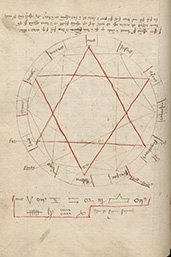
As customary for convolutes, several hands can be found in Ms. 688. These hands can alternate within the texts, or are responsible for one or more excerpts. Thanks to a few notes we can determine to whom some of the hands belonged and from which era they derived. On fol. 62r a note can be found from Symon Hoflant de Velsen from the diocese Utrecht. He wrote this in the year 1346 while he was in Montpellier. This gives us the earliest date for Ms. 688.c
The remarkable death of Wermboldus Overstege
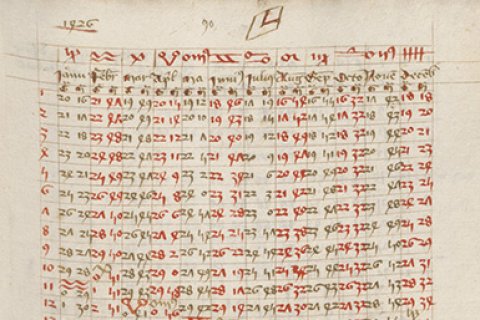
On fol. 77v and 78v Wermboldus Overstege from Kampen wrote down his name next to some texts. Wermboldus belonged to the Utrecht Carthusians, but before entering the monastic life he was a physician. He owned several medical manuscripts, for example Ms. 687 from the Utrecht University Library and a manuscript from the Universitätbibliothek Kassel (Ms. 4° Ms. med. 2). We know for certain that Wermboldus brought at least Mss. 687 and 688 with him into the monastery. These manuscripts are part of the collection Library of the Carthusian Monastery Nieuwlicht and were as such obtained by the Utrecht University Library.
Wermboldus died on 27 September 1459, the feast day of the Saints Cosmas and Damian. His death is mentioned in a Brussels Carthusian manuscript (Brussels, Royal Library, Ms. 7043, fol. 70v). They considered Wermboldus’ death on this particular day as remarkable, because Cosmas and Damian were regarded as the patrons of physicians and surgeons. Although Wermboldus wasn’t practicing his original profession anymore, his death on this day could be interpreted as a special sign, according to the Brussels Carthusians.
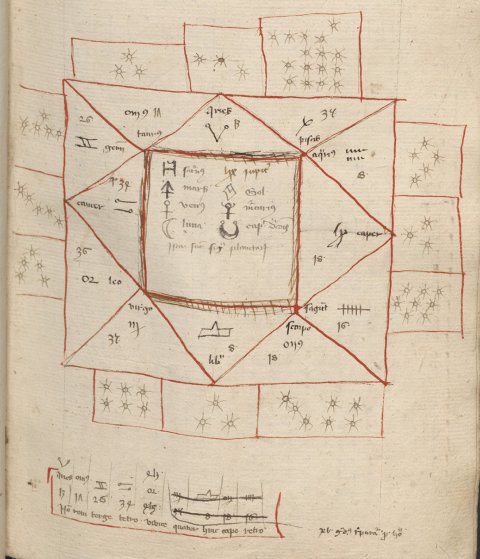
Close to the source?
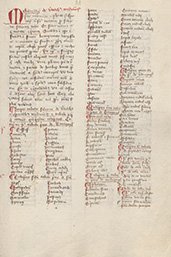
Ms. 688 contains different short and long medical texts and excerpts. The first and one of the longest texts is Super Libro IX Almansoris by Gerardus de Solo. This text has (possibly partially) been written down by the aforementioned Symon Hoflant. It’s a Latin commentary on the al-Hawi al-Kabir, a medical encyclopaedia in nine volumes, written by the Persian physician and philosopher Rasis (854-925).
Gerardus de Solo (†1360) was a physician and lecturer at the University of Montpellier. In the Middle Ages this university was considered one of the leading universities in the field of medicine and up until today is one of the oldest medical faculties in the world where medicine is still being taught.
Gerardus de Solo supposedly finished his Super Libro IX Almansoris around 1350 (Guenoun 1999, 466). Since Symon Hoflant was copying this work in Montpellier around 1346, it is plausible that Symon was in the vicinity of Gerardus or possibly was copying directly from the original work by Gerardus. It can be stated with certainty that if Symon was copying from Montpellier in 1346, he must have been very close to the original source.
Astronomical tables and horoscopes
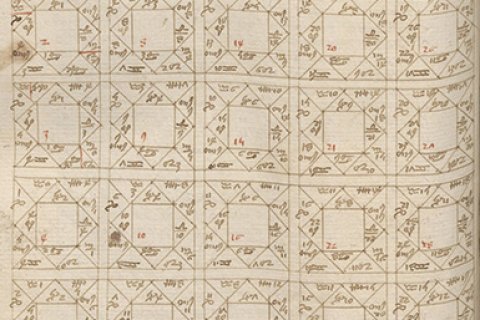
Next to medical texts, excerpts and Salernitan Tables Ms. 688 also contains various astronomical tables and horoscopes. The astronomical tables on fol. 87r-88v are made for the years 1426 and 1448-1459. This gives us insight in when this part of the manuscript was written down.
On fol. 1r and 134v we find astrological circles, a tool to perform calculations. Astrological predictions can be determined based on the position of the planets relative to other planets. For this, the aspectus is taken into account: the amount of signs that are part of these separate planets (Burnett 1996, 373.). The aspectus can consist of three, four or six signs. The circle on fol. 1r only has the aspectus of three and six. The circle on fol. 134r consists of all three aspectus signs.
Additionally, many horoscope tables can be found in the manuscript. From fol. 143v onwards we find horoscopes for every zodiac sign. In the Middle Ages the practice of medicine relied heavily on astrology and astronomy. Physicians based themselves on the theory of humorism by Galen, which holds the idea that the human body consists of four bodily fluids that are decisive for a person’s temperament and health. These bodily fluids are under the influence of the sun, moon, planets and their position in the signs of the zodiac. This explains why such tables fit well into a medical manuscript.
A Dutch astrological puzzle
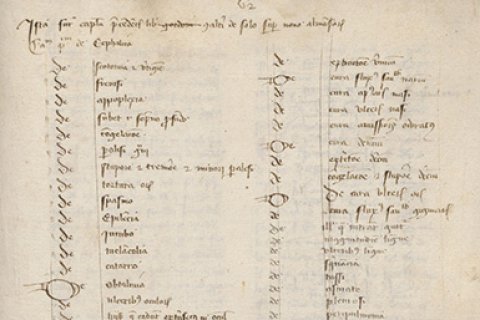
The manuscript consists of 149 folios. However, an extra folium can be found, although it’s torn off. Only a part of this page (in fact fol. 150) is still visible, upon which, although only a couple words, text can be perceived. These words are unmistakably Dutch and not Latin. Ms. 688 possibly contained one or more Dutch texts, which were probably not regarded as useful by a previous owner and therefore torn out. We can read the word ‘Saturnus’ in the still readable text, which implies that this must have been an astrological text. The manuscript still has a piece of the puzzle to solve, which definitely makes it worth to examine it!
Author
Femke van Hilten, May 2017

